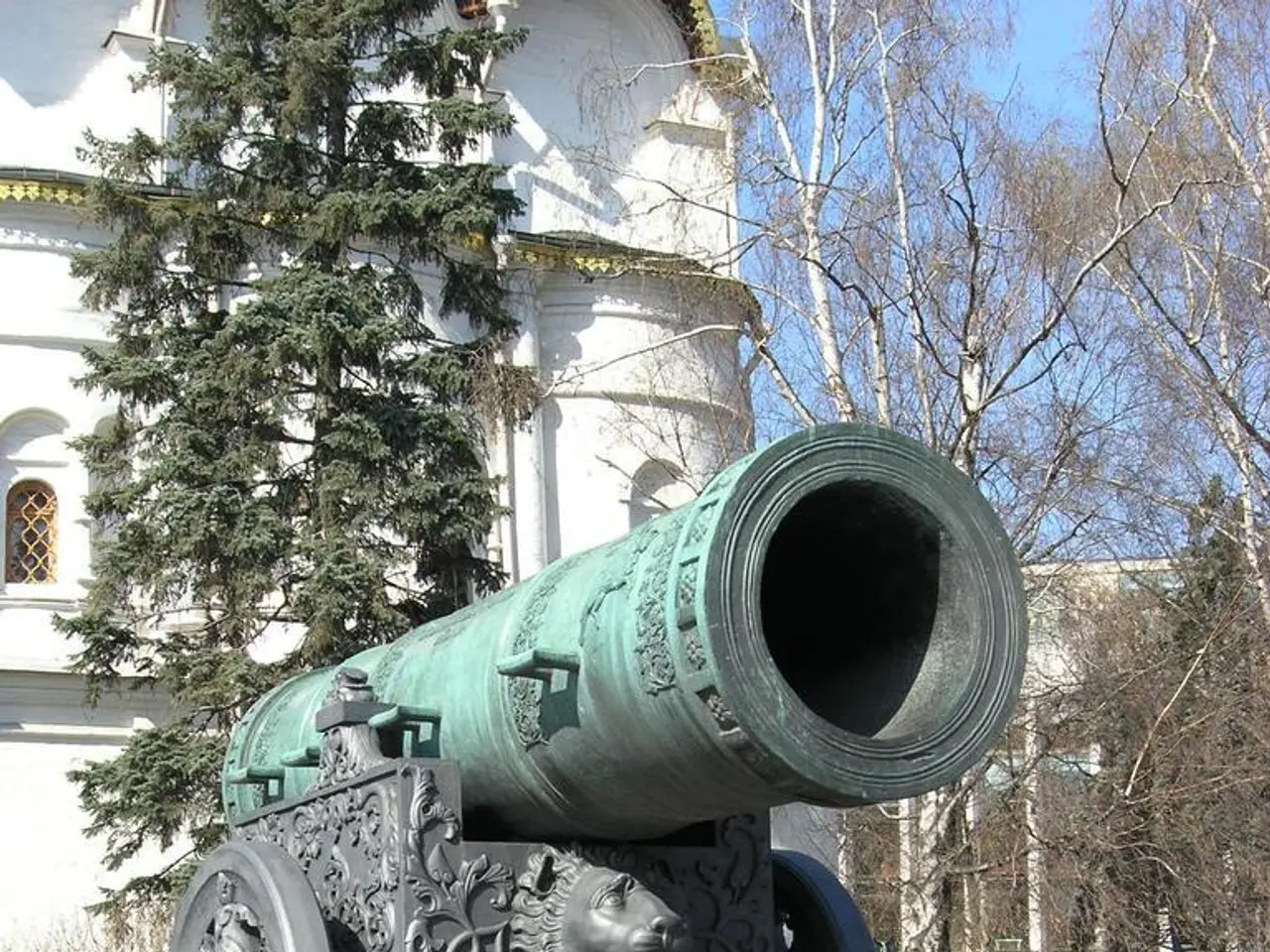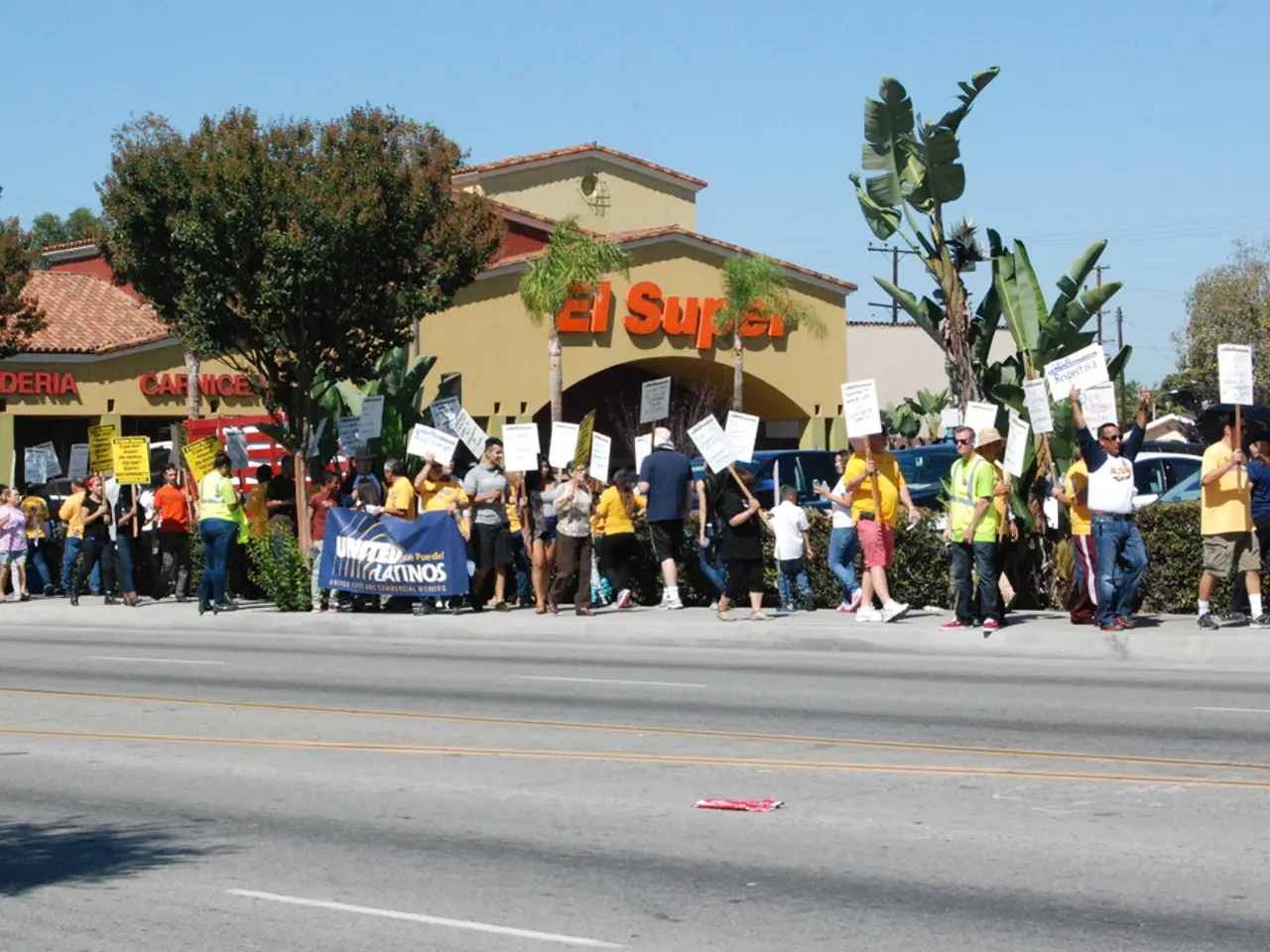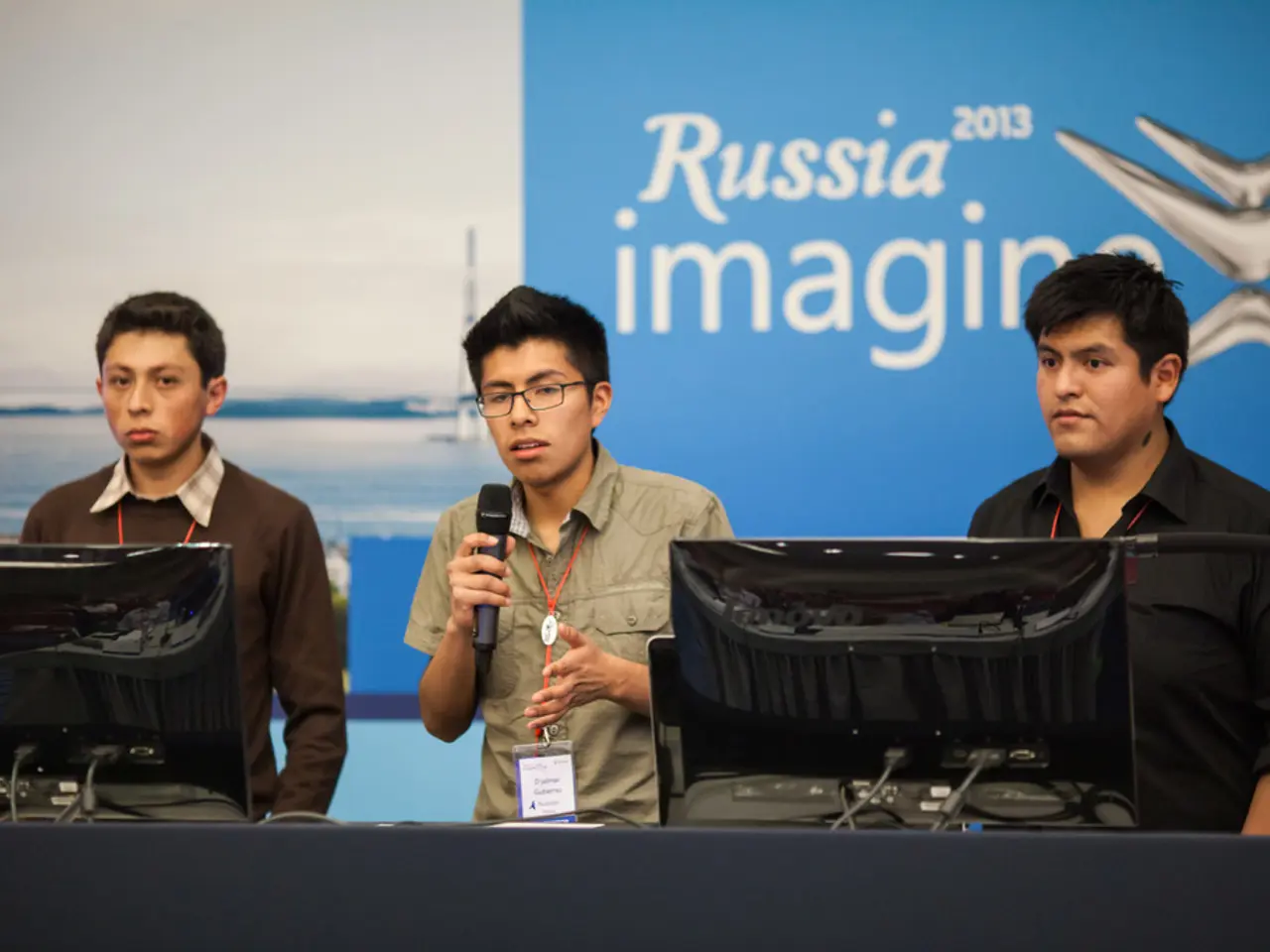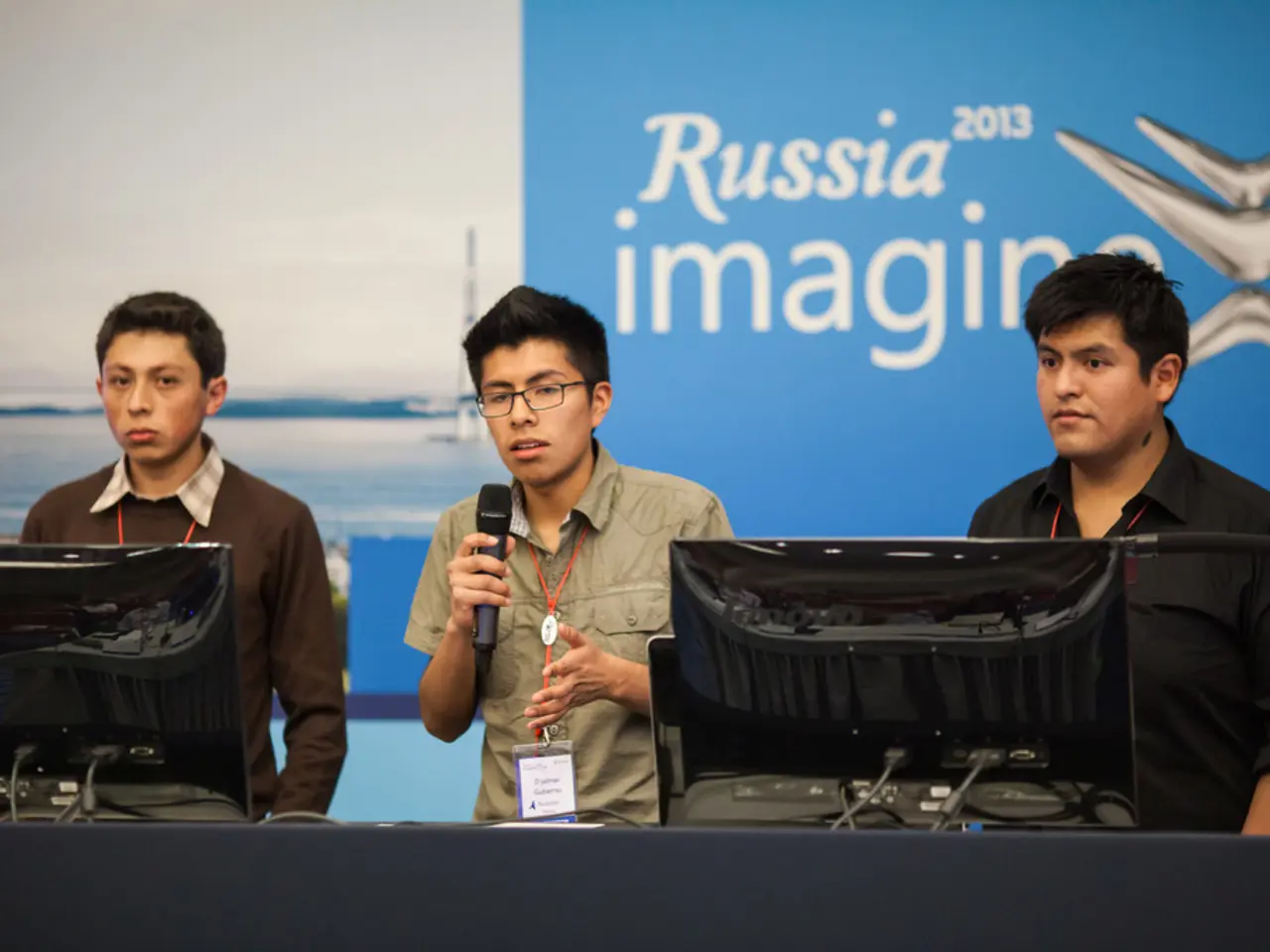Austro-Prussian-Russian Pact of August 5, 1772: The convention marking the initial division of the Polish-Lithuanian Commonwealth, finalized in Saint Petersburg. This agreement validated the mutual accords between the three powers.
On a fateful day in August 1772, the Austro-Prussian-Russian Convention was signed in St. Petersburg, Russia. This tripartite agreement marked a significant event in the history of the Polish-Lithuanian Commonwealth, setting in motion the First Partition of this once powerful nation.
The Convention formalized a secret agreement for the territorial division of the Polish-Lithuanian Commonwealth. Each of the three powers, Austria, Prussia, and Russia, made specific annexations, altering the political landscape of Eastern Europe.
Prussia, under the leadership of Frederick II, gained the Polish province of West Prussia, excluding the city of Danzig (Gdańsk). This acquisition linked Brandenburg and Pomerania with East Prussia, creating greater territorial cohesion and more defensible borders for Prussia. The geographic center of Prussia shifted eastward as a result.
Russia, motivated by the desire for easily defensible borders, annexed vast lands in the east, including Ukrainian territories.
Austria also made substantial gains in the southeastern parts of the Commonwealth, including parts of Galicia.
The First Partition had severe consequences for the Polish-Lithuanian Commonwealth. The nation lost almost one-third of its territory and over a third of its population, severely weakening the Commonwealth. Politically, the Commonwealth was intimidated into compliance, its constitution was abolished, and many patriot leaders emigrated.
The partition set a precedent for further partitions, with the Second (1793) and Third (1795) partitions eventually erasing Poland from the map of Europe. The 1795 partition divided virtually the entire territory among Russia, Prussia, and Austria, with Russia obtaining the largest share.
The First Partition marked the beginning of a century-long Polish struggle for sovereignty and national identity, fueling resistance movements and shaping European diplomatic affairs. The displacement of over 2.9 million people from the Polish-Lithuanian Commonwealth was a tragic consequence of this historic event.
[1] Gross, Jan T. The War Against the Jews, 1939-1945. Yale University Press, 2006.
[2] Kieniewicz, Wieslaw. The First Partition of Poland, 1772-1795. Cambridge University Press, 1983.
[3] Lukowski, Jerzy, and Hubert Zawadzki. A Concise History of Poland. Cambridge University Press, 2006.
[5] Tallett, Stephen. Empress Catherine the Great: Life, Loves, and Reign. Yale University Press, 2002.
In the aftermath of the First Partition, the geopolitics of Eastern Europe were altered significantly, with each of the three signatories - Austria, Prussia, and Russia - gaining specific territories from the Polish-Lithuanian Commonwealth. For instance, Prussia, under Frederick II, expanded its territory eastward by acquiring West Prussia. Simultaneously, general-news reports began to circulate about these political changes, as the events were of great significance in the sphere of politics.






